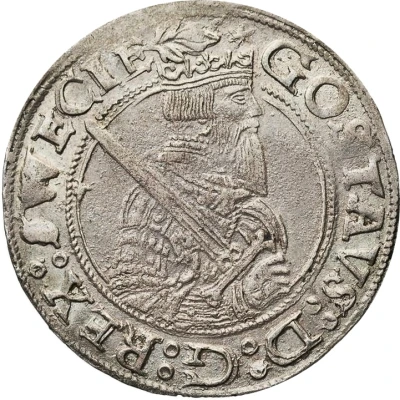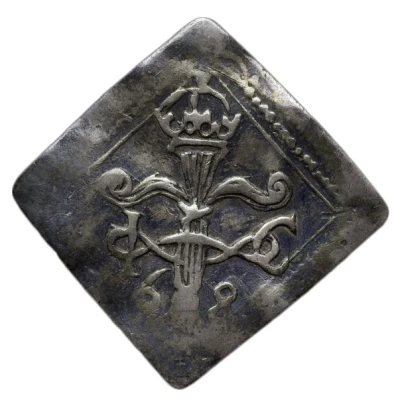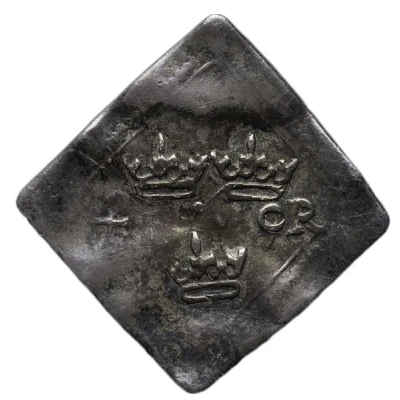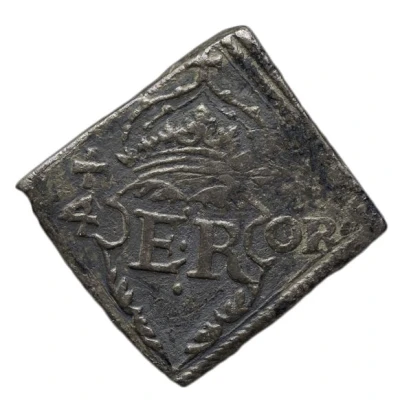
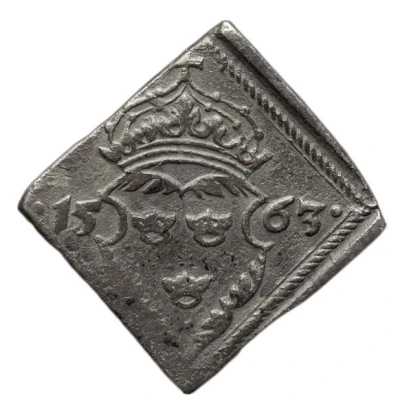

© Uppsala Universitet
4 Öre "Klippingar" - Erik XIV
| Billon (.375 silver) | 5.63 g | - |
| Issuer | Sweden |
|---|---|
| King | Eric XIV (1560-1568) |
| Type | Standard circulation coin |
| Years | 1562-1568 |
| Value | 4 Öre (⅛) |
| Currency | Daler (1534-1593) |
| Composition | Billon (.375 silver) |
| Weight | 5.63 g |
| Size | 25.95 mm |
| Shape | Square (irregular) |
| Technique | Klippe |
| Demonetized | Yes |
| Updated | 2024-10-07 |
| Numista | N#128497 |
|---|---|
| Rarity index | 97% |
Reverse
Crowned shield with the Three Crowns of Sweden divides date at both sides.
Lettering: 15 64
Comment
Weight can vary from 2 g to 6 g.The Swedish crown's coffers were soon emptied after Erik XIV had acceeded the throne in 1560. The silver coins contained gradually less silver through the 1560s and coin production was not quick enough to pay the country's expenses. Square-cut coins, called 'Klippes' reduced production time considerably and large numbers of Klippe coins with denominations 16, 8, 4 and 2 ore were produced 1562-68.
Interesting fact
One interesting fact about the 4 Öre "Klippingar" coin from Sweden is that it was issued during the reign of King Erik XIV, who was known for his controversial coinage reforms. In an effort to address the country's economic problems, Erik XIV introduced a new currency system based on the "klipping" method, which involved cutting the coin into smaller pieces to increase its quantity. This resulted in the production of many different denominations, including the 4 Öre coin, which was made of billon (a silver-copper alloy) and weighed 5.63 grams. Despite its unusual design and materials, the coin remains a popular collector's item among numismatists today.
